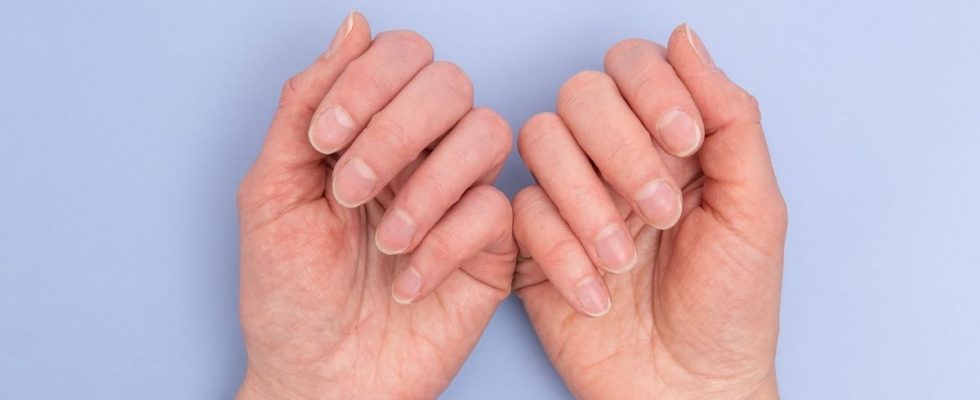Published on
Updated
Reading 3 min.
in collaboration with
Dr Gérald Kierzek (Medical Director)
On TikTok, an American emergency doctor created panic last week by claiming that a thumb “flexibility” test could predict fatal heart disease by 98%. Info or intox ? Our medical director, also an emergency doctor, Dr Gérald Kierzek gives us his opinion.
He probably wanted to send a message of prevention but created panic in a single post. US emergency physician Dr Joe Whittington shared an exercise this week called the thumb test, which he said could be a sign of a silent and dangerous heart condition. He has since removed his post.
98% of people who pass this test are at risk of dying from an aneurysm. Really ?
The test, called the thumb-to-palm test by Yale cardiologists, involves placing your hand flat on a table, palm up, or holding it out in front of you and running your thumb across your palm. This way the thumb may or may not extend past the palm. And this detail would have a strong implication, for the emergency room doctor: if the thumb protrudes on the opposite side of the hand, Dr. Whittington says you have a 98% chance of having an aortic aneurysm – a dangerous bulge that could burst in the artery that carries blood from the heart. This hyper flexibility of the thumb would in fact be a sign of a collagen deficiency, which could lead to dangerous swelling of your arteries.
“Studies have shown that although not everyone with an aortic aneurysm tests positive, those who test positive have a 98% chance of having an aneurysm.”said the California-based doctor.
Despite the disappearance of the post, the doctor’s words did not fail to create fear among Internet users who had tested the maneuver at home… with success.
A causal link less obvious than it seems
Several colleagues then decided to qualify the doctor’s remarks, like Dr. Muhammad Siyad Panhwar, interventional cardiologist at Sanford Health. “There is no need to panic.”he said in a TikTok response to Dr. Whittington. While it is true that the palm-thumb test could be a sign of collagen deficiency, it is not confirmation that you definitely have an aneurysm.”.
So collagen is a stretchy, supportive fiber found throughout the body and is particularly important in helping blood vessels maintain their shape over time. A collagen deficiency can therefore impact weaker blood vessels, which are more likely to swell over time under stress, causing an aneurysm. “But even if your thumb-palm test is positive and it turns out you also have an aneurysm, that’s no reason to panic because not all aneurysms are emergencies.” he continues, inviting you to speak more calmly about it with your doctor.
This test does not constitute a diagnosis in itself
For Dr. Gérald Kierzek, emergency physician and medical director of Doctissimo, saying that this test is a sign of an inevitable aneurysm is going a bit too fast.
“The Ehlers-Danlos thumb test is a procedure used to evaluate hyperextensibility (hyperlaxity) of the joints, which is one of the characteristic signs of Ehlers-Danlos syndrome (EDS). In cases of EDS, this excessive flexibility can be observed, which is often an indicator, in fact, of the presence of this hereditary connective tissue disease. However, it is important to note that this test is not diagnostic in itself and should be interpreted by a professional with genetic testing if necessary. Furthermore, hyperlaxity may or may not be a symptom of EDS! And above all not necessarily an aneurysm!”
In short, if your palm-thumb test is positive and you have a family history of collagen disorders, you should consult your doctor… Without panicking, however.
